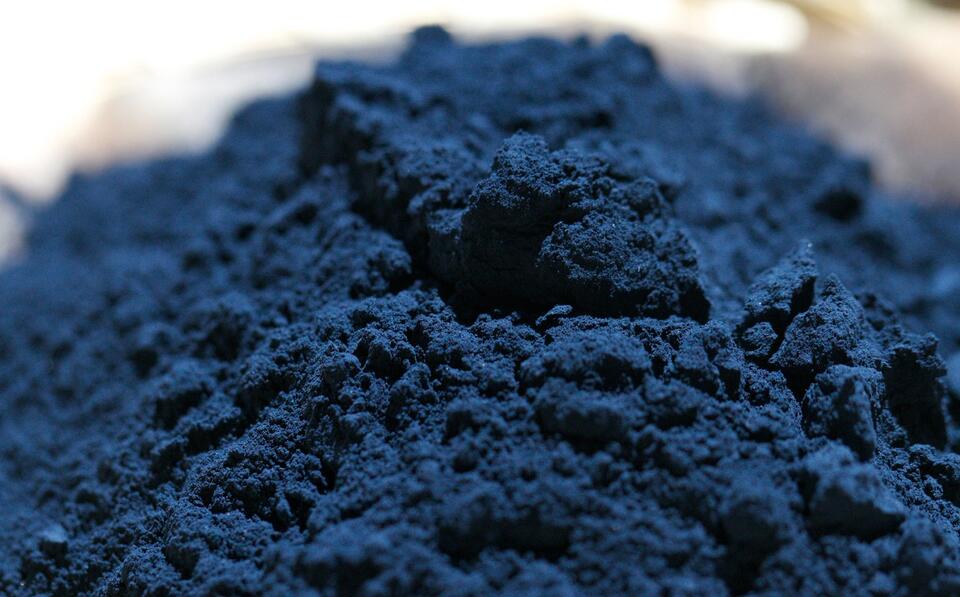May 30th, 2016
The Bengali filmmaker Satyajit Ray's book of short stories The Unicorn Expedition, the title story of which concerns Mohenjo-daro, includes another brilliant story which may also have connections to the ancient Indus civilization. It is called Night of the Indigo and begins with "My name is Aniruddha Bose. I am twenty-nine and a bachelor. For the last eight years I've been working in an advertising agency in Calcutta. . . .. The last few months I haven't written at all, but I have read a lot about indigo plantations in Bengal and Bihar in the nineteenth century. . . . and how, finally, with the invention of synthetic indigo in Germany, the cultivation of indigo was wiped from our country–all this I know by heart. It is to describe the terrible experience which instilled in me this interest in indigo that I have taken up my pen today." ( The Unicorn Expedition, E.P. Dutton, New York, 1987, p. 79)
There is no hard and fast proof yet that indigo was an important dye during Indus times, but it is quite possible. Hobson-Jobson (1903) defines indigo as: "The plant Indigofera tinctoria, L. (N.O. Leguminosao), and the dark blue dye made from it. Greek [xxxx]. This word appears from Hippocrates to have been applied in his time to Pepper. It is also applied by Dioscorides to the mineral substance (a variety of the red oxide of iron) called Indian red (F. Adams, Appendix to Dunbar's LexiconLiddell & Scott call it "a dark blue dye, indigo." The dye was used in Egyptian mummy cloths (Wilkinson, Ancient Egypt, ed. 1878, ii. 163).]
The earliest reference Hobson-Jobson gives is "a.D. c. 60.–"Of that which is called [xxxx] one kind is produced spontaneously, being as it were a scum thrown out by the Indian reeds; but that used for dyeing is purple efflorescence which flots on the brazen cauldrons, which the craftsmen skim off and dry. That is deemed best which is blue in colour, succulent, and smooth to the touch. Dioscorides, v. cap. 107. (Henry Yule and A.C. Burnell, Hobson-Jobson, John Murray, 1903 [1994], p. 437).
Wikipedia defines indigo asa "Species of Indigofera were cultivated in India, East Asia and Egypt in antiquity. Pliny mentions India as the source of the dye, imported in small quantities via the Silk Road. The Greek term for the dye was Ἰνδικὸν φάρμακον ("Indian dye"), which, adopted to Latin as indicum and via Portuguese gave rise to the modern word indigo."
Gregory Possehl writes in one of the few references by an Indus scholar, "Indigo and Lathyrus odoratus, both legumes, the root nodules of which help in the natural fertilization of the soil, were once widely cultivated in the western region of the subcontinent. Their cultiuvation was stopped by the British and this adversely affected soil fertility (Harappan Civilization, p. 35).
Ray's is an excellent story, with a twisted ending that plays with the figure of the researcher and the historical indigo planter. It is hoped that future research shed better light on the connection if any between Indus economy and indigo.
Image source: http://www.seaislandindigo.net/workshops/

